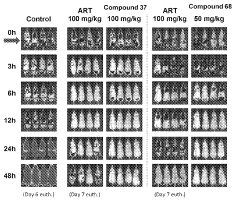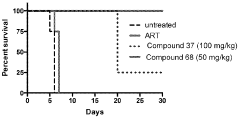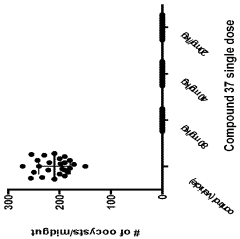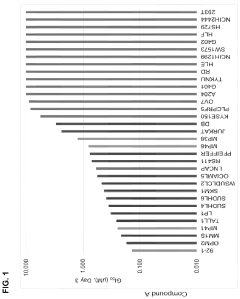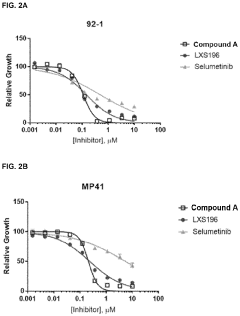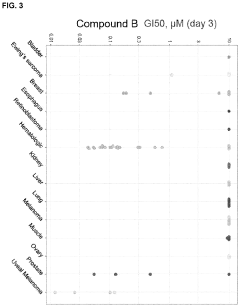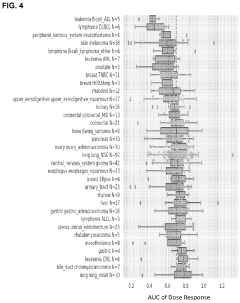Application of Geometric Isomers in the Development of Synthetic Routes
AUG 1, 20259 MIN READ
Generate Your Research Report Instantly with AI Agent
Patsnap Eureka helps you evaluate technical feasibility & market potential.
Geometric Isomers in Synthesis: Background and Objectives
Geometric isomers have played a pivotal role in the evolution of synthetic organic chemistry, offering unique opportunities for the development of novel synthetic routes. The concept of geometric isomerism, first recognized in the mid-19th century, has since become a fundamental principle in understanding molecular structure and reactivity. This field has seen significant advancements over the past century, with researchers continually exploring new applications and methodologies.
The primary objective of studying geometric isomers in synthesis is to harness their distinct spatial arrangements to achieve specific chemical transformations. These isomers, characterized by different spatial orientations of atoms or groups around a rigid structure such as a carbon-carbon double bond or a cyclic system, exhibit varying physical and chemical properties. This variability provides chemists with a powerful tool for controlling reaction outcomes and designing more efficient synthetic pathways.
In recent years, the application of geometric isomers in synthesis has gained renewed interest due to advancements in analytical techniques and computational modeling. These developments have enabled researchers to better predict and control isomerization processes, leading to more precise and targeted synthetic strategies. The ability to manipulate geometric isomers has become particularly crucial in the pharmaceutical industry, where the spatial arrangement of molecules can significantly impact drug efficacy and safety.
The evolution of this field has been marked by several key milestones. Early work focused on understanding the basic principles of geometric isomerism and developing methods for isomer separation. This was followed by the exploration of isomerization mechanisms and the development of stereospecific reactions. More recently, attention has shifted towards utilizing geometric isomers in asymmetric synthesis and catalysis, opening up new avenues for the production of complex chiral molecules.
As we look towards the future, the integration of geometric isomer manipulation with other emerging technologies, such as flow chemistry and artificial intelligence-driven reaction prediction, promises to further revolutionize synthetic organic chemistry. The goal is to develop more sustainable, efficient, and versatile synthetic routes that can address the growing demands of various industries, from materials science to biotechnology.
This technical research report aims to provide a comprehensive overview of the current state of geometric isomer applications in synthetic route development, analyze the challenges and opportunities in this field, and explore potential future directions. By examining both the historical context and the cutting-edge research, we seek to offer valuable insights that can guide future innovations in this critical area of organic chemistry.
The primary objective of studying geometric isomers in synthesis is to harness their distinct spatial arrangements to achieve specific chemical transformations. These isomers, characterized by different spatial orientations of atoms or groups around a rigid structure such as a carbon-carbon double bond or a cyclic system, exhibit varying physical and chemical properties. This variability provides chemists with a powerful tool for controlling reaction outcomes and designing more efficient synthetic pathways.
In recent years, the application of geometric isomers in synthesis has gained renewed interest due to advancements in analytical techniques and computational modeling. These developments have enabled researchers to better predict and control isomerization processes, leading to more precise and targeted synthetic strategies. The ability to manipulate geometric isomers has become particularly crucial in the pharmaceutical industry, where the spatial arrangement of molecules can significantly impact drug efficacy and safety.
The evolution of this field has been marked by several key milestones. Early work focused on understanding the basic principles of geometric isomerism and developing methods for isomer separation. This was followed by the exploration of isomerization mechanisms and the development of stereospecific reactions. More recently, attention has shifted towards utilizing geometric isomers in asymmetric synthesis and catalysis, opening up new avenues for the production of complex chiral molecules.
As we look towards the future, the integration of geometric isomer manipulation with other emerging technologies, such as flow chemistry and artificial intelligence-driven reaction prediction, promises to further revolutionize synthetic organic chemistry. The goal is to develop more sustainable, efficient, and versatile synthetic routes that can address the growing demands of various industries, from materials science to biotechnology.
This technical research report aims to provide a comprehensive overview of the current state of geometric isomer applications in synthetic route development, analyze the challenges and opportunities in this field, and explore potential future directions. By examining both the historical context and the cutting-edge research, we seek to offer valuable insights that can guide future innovations in this critical area of organic chemistry.
Market Demand for Stereospecific Synthetic Routes
The market demand for stereospecific synthetic routes has been steadily increasing in recent years, driven by the growing importance of geometric isomers in various industries. Pharmaceutical companies, in particular, have shown a keen interest in developing efficient and cost-effective methods for synthesizing specific isomers. This demand stems from the fact that different geometric isomers of the same compound can exhibit vastly different biological activities, with one isomer potentially being therapeutically beneficial while the other may be inactive or even harmful.
In the pharmaceutical sector, the ability to selectively produce desired geometric isomers has become crucial for drug development and manufacturing. Many drugs on the market today are single-isomer formulations, which offer improved efficacy and reduced side effects compared to their racemic counterparts. This trend has led to a significant market for stereospecific synthetic routes, with pharmaceutical companies investing heavily in research and development to optimize these processes.
The agrochemical industry has also recognized the importance of geometric isomers in developing more effective and environmentally friendly pesticides and herbicides. Stereospecific synthesis allows for the production of compounds with enhanced target specificity and reduced environmental impact. This has created a substantial market demand for innovative synthetic routes that can efficiently produce the desired isomers.
In the field of materials science, the control of geometric isomerism has become increasingly important for developing advanced materials with specific properties. Industries such as electronics, optics, and nanotechnology require precise control over molecular structure to achieve desired functionalities. This has led to a growing demand for stereospecific synthetic routes that can produce materials with tailored properties.
The flavor and fragrance industry has also shown significant interest in stereospecific synthesis. Many aroma compounds exist as geometric isomers, with each isomer possessing distinct olfactory properties. The ability to selectively produce specific isomers allows for the creation of more nuanced and complex fragrances, driving demand for advanced synthetic routes in this sector.
As environmental concerns continue to grow, there is an increasing market demand for greener and more sustainable synthetic routes. Stereospecific synthesis often offers advantages in terms of atom economy and reduced waste generation, aligning well with the principles of green chemistry. This has created opportunities for the development of novel catalysts and reaction conditions that enable more efficient and environmentally friendly production of geometric isomers.
The global market for stereospecific synthetic routes is expected to continue its growth trajectory in the coming years. Factors such as increasing regulatory requirements for single-isomer drugs, growing demand for high-performance materials, and the need for more sustainable chemical processes are likely to drive further innovation and investment in this field. As a result, companies and research institutions that can develop and commercialize efficient stereospecific synthetic routes are well-positioned to capitalize on this expanding market opportunity.
In the pharmaceutical sector, the ability to selectively produce desired geometric isomers has become crucial for drug development and manufacturing. Many drugs on the market today are single-isomer formulations, which offer improved efficacy and reduced side effects compared to their racemic counterparts. This trend has led to a significant market for stereospecific synthetic routes, with pharmaceutical companies investing heavily in research and development to optimize these processes.
The agrochemical industry has also recognized the importance of geometric isomers in developing more effective and environmentally friendly pesticides and herbicides. Stereospecific synthesis allows for the production of compounds with enhanced target specificity and reduced environmental impact. This has created a substantial market demand for innovative synthetic routes that can efficiently produce the desired isomers.
In the field of materials science, the control of geometric isomerism has become increasingly important for developing advanced materials with specific properties. Industries such as electronics, optics, and nanotechnology require precise control over molecular structure to achieve desired functionalities. This has led to a growing demand for stereospecific synthetic routes that can produce materials with tailored properties.
The flavor and fragrance industry has also shown significant interest in stereospecific synthesis. Many aroma compounds exist as geometric isomers, with each isomer possessing distinct olfactory properties. The ability to selectively produce specific isomers allows for the creation of more nuanced and complex fragrances, driving demand for advanced synthetic routes in this sector.
As environmental concerns continue to grow, there is an increasing market demand for greener and more sustainable synthetic routes. Stereospecific synthesis often offers advantages in terms of atom economy and reduced waste generation, aligning well with the principles of green chemistry. This has created opportunities for the development of novel catalysts and reaction conditions that enable more efficient and environmentally friendly production of geometric isomers.
The global market for stereospecific synthetic routes is expected to continue its growth trajectory in the coming years. Factors such as increasing regulatory requirements for single-isomer drugs, growing demand for high-performance materials, and the need for more sustainable chemical processes are likely to drive further innovation and investment in this field. As a result, companies and research institutions that can develop and commercialize efficient stereospecific synthetic routes are well-positioned to capitalize on this expanding market opportunity.
Current Challenges in Geometric Isomer Utilization
The utilization of geometric isomers in synthetic route development faces several significant challenges that hinder their widespread application and optimal exploitation. One of the primary obstacles is the difficulty in controlling the stereoselectivity of reactions involving geometric isomers. The formation of undesired isomers often leads to reduced yields and complex purification processes, impacting the overall efficiency of synthetic routes.
Another major challenge lies in the stability and interconversion of geometric isomers. Many compounds can undergo isomerization under certain conditions, such as heat, light, or in the presence of catalysts. This instability can complicate the synthesis and storage of desired isomers, potentially compromising the integrity of pharmaceutical or industrial products.
The characterization and separation of geometric isomers present additional hurdles. While techniques like NMR spectroscopy and X-ray crystallography can be used for structural determination, they often require specialized equipment and expertise. Separation methods, such as chromatography, can be time-consuming and may not always achieve complete resolution, especially for closely related isomers.
In the realm of asymmetric synthesis, achieving high stereoselectivity for geometric isomers remains a significant challenge. Developing catalysts or reaction conditions that favor the formation of a specific geometric isomer over its counterpart is an ongoing area of research, with implications for the pharmaceutical and fine chemical industries.
The scalability of processes involving geometric isomers is another critical issue. Reactions that perform well on a laboratory scale may encounter unforeseen difficulties when scaled up for industrial production. Factors such as heat transfer, mixing efficiency, and reaction kinetics can significantly impact the stereoselectivity and yield of geometric isomers in large-scale operations.
Furthermore, the prediction and modeling of geometric isomer behavior in complex reaction systems pose computational challenges. While molecular modeling has advanced significantly, accurately simulating the dynamics of geometric isomerization and predicting reaction outcomes remains difficult, particularly for systems with multiple stereocenters or conformational flexibility.
Lastly, the regulatory landscape surrounding the use of geometric isomers, especially in pharmaceutical applications, presents additional complexities. Stringent requirements for isomeric purity and the need for comprehensive characterization of all possible isomers can increase development timelines and costs, potentially limiting the exploration of geometric isomer-based synthetic routes in certain industries.
Another major challenge lies in the stability and interconversion of geometric isomers. Many compounds can undergo isomerization under certain conditions, such as heat, light, or in the presence of catalysts. This instability can complicate the synthesis and storage of desired isomers, potentially compromising the integrity of pharmaceutical or industrial products.
The characterization and separation of geometric isomers present additional hurdles. While techniques like NMR spectroscopy and X-ray crystallography can be used for structural determination, they often require specialized equipment and expertise. Separation methods, such as chromatography, can be time-consuming and may not always achieve complete resolution, especially for closely related isomers.
In the realm of asymmetric synthesis, achieving high stereoselectivity for geometric isomers remains a significant challenge. Developing catalysts or reaction conditions that favor the formation of a specific geometric isomer over its counterpart is an ongoing area of research, with implications for the pharmaceutical and fine chemical industries.
The scalability of processes involving geometric isomers is another critical issue. Reactions that perform well on a laboratory scale may encounter unforeseen difficulties when scaled up for industrial production. Factors such as heat transfer, mixing efficiency, and reaction kinetics can significantly impact the stereoselectivity and yield of geometric isomers in large-scale operations.
Furthermore, the prediction and modeling of geometric isomer behavior in complex reaction systems pose computational challenges. While molecular modeling has advanced significantly, accurately simulating the dynamics of geometric isomerization and predicting reaction outcomes remains difficult, particularly for systems with multiple stereocenters or conformational flexibility.
Lastly, the regulatory landscape surrounding the use of geometric isomers, especially in pharmaceutical applications, presents additional complexities. Stringent requirements for isomeric purity and the need for comprehensive characterization of all possible isomers can increase development timelines and costs, potentially limiting the exploration of geometric isomer-based synthetic routes in certain industries.
Existing Strategies for Geometric Isomer Control
01 Synthesis and separation of geometric isomers
Methods for synthesizing and separating geometric isomers are crucial in organic chemistry. These techniques involve various reaction conditions, catalysts, and purification processes to obtain specific isomers. Separation methods may include chromatography, crystallization, or selective complexation.- Synthesis and separation of geometric isomers: Methods for synthesizing and separating geometric isomers are crucial in organic chemistry. These techniques involve various reaction conditions, catalysts, and purification processes to obtain specific isomers. Separation methods may include chromatography, crystallization, or selective complexation.
- Geometric isomers in pharmaceutical compounds: Geometric isomerism plays a significant role in pharmaceutical compounds, affecting their biological activity and efficacy. Research focuses on identifying and isolating specific isomers with desired therapeutic properties, as well as studying their metabolism and pharmacokinetics.
- Analytical methods for geometric isomers: Advanced analytical techniques are employed to identify, characterize, and quantify geometric isomers. These methods include spectroscopic techniques such as NMR, IR, and mass spectrometry, as well as chromatographic methods like HPLC and GC.
- Computational modeling of geometric isomers: Computational methods are used to predict and analyze the properties of geometric isomers. These include molecular modeling, quantum chemical calculations, and machine learning approaches to understand isomer stability, reactivity, and physical properties.
- Applications of geometric isomers in materials science: Geometric isomers find applications in various fields of materials science, including liquid crystals, polymers, and nanomaterials. The specific arrangement of atoms in these isomers can lead to unique physical and chemical properties, enabling the development of novel materials with tailored characteristics.
02 Geometric isomers in pharmaceutical compounds
Geometric isomerism plays a significant role in pharmaceutical compounds, affecting their biological activity and efficacy. Research focuses on identifying and isolating specific isomers with desired therapeutic properties, as well as studying their metabolism and pharmacokinetics.Expand Specific Solutions03 Analytical methods for geometric isomer identification
Advanced analytical techniques are employed to identify and characterize geometric isomers. These methods include spectroscopic techniques such as NMR, IR, and mass spectrometry, as well as computational modeling and X-ray crystallography for structural determination.Expand Specific Solutions04 Geometric isomers in materials science and engineering
The study of geometric isomers extends to materials science and engineering applications. This includes the development of novel materials with specific properties based on isomeric structures, such as liquid crystals, polymers, and nanomaterials.Expand Specific Solutions05 Computational modeling and visualization of geometric isomers
Advanced computational techniques are used to model and visualize geometric isomers. These methods involve molecular dynamics simulations, quantum mechanical calculations, and 3D rendering to predict and analyze isomeric structures and their properties.Expand Specific Solutions
Key Players in Stereospecific Synthesis
The application of geometric isomers in synthetic route development is currently in a growth phase, with increasing market potential and technological advancements. The market size is expanding as pharmaceutical companies like H. Lundbeck A/S, Bristol Myers Squibb, and Pfizer Inc. invest in research and development to exploit the unique properties of geometric isomers for drug synthesis. The technology's maturity is progressing, with academic institutions such as Tongji University and Wuhan University contributing to fundamental research. However, the field still presents challenges in scalability and industrial application, indicating room for further innovation and market growth.
Bristol Myers Squibb Co.
Technical Solution: Bristol Myers Squibb has developed innovative synthetic routes utilizing geometric isomers for drug development. Their approach involves stereoselective synthesis to control the formation of specific geometric isomers. They employ advanced catalytic systems and reaction conditions to favor the desired isomer formation. The company has implemented asymmetric hydrogenation techniques to selectively produce cis or trans isomers of key intermediates[1]. Additionally, they have developed novel photochemical isomerization methods to interconvert between geometric isomers, allowing for efficient production of the desired isomeric form[2]. Bristol Myers Squibb also utilizes computational modeling to predict isomer stability and reactivity, guiding their synthetic strategy design[3].
Strengths: Precise control over isomer formation, efficient large-scale production. Weaknesses: Complex purification processes may be required, potential for unwanted isomerization during synthesis or storage.
Pfizer Inc.
Technical Solution: Pfizer has implemented a comprehensive approach to leveraging geometric isomers in their synthetic routes. They utilize dynamic kinetic resolution techniques to selectively produce desired geometric isomers from racemic mixtures[4]. The company has developed proprietary transition metal catalysts that enable highly stereoselective transformations, particularly for the synthesis of complex pharmaceutical intermediates[5]. Pfizer employs advanced spectroscopic methods, including 2D NMR techniques, for rapid and accurate determination of geometric isomer ratios and configurations[6]. They have also integrated continuous flow chemistry platforms to optimize the production of specific geometric isomers, allowing for improved scalability and process control[7].
Strengths: High-throughput screening capabilities for isomer optimization, robust analytical methods for isomer characterization. Weaknesses: Some approaches may be limited to specific compound classes, potential for increased production costs due to specialized catalysts or equipment.
Innovative Approaches in Isomer-Directed Synthesis
Compounds and methods for the treatment of malaria
PatentInactiveIN202118043692A
Innovation
- Development of specific compounds, such as those represented by Formula I and listed in Table 1, which offer new structural features and functional groups to target malaria parasites effectively, including those resistant to existing drugs.
Compounds and uses thereof
PatentPendingUS20230145003A1
Innovation
- Development of specific compounds that modulate the BAF complex by inhibiting BRG1 and/or BRM activity, which can be used alone or in combination with other pharmaceutically active agents to treat disorders like cancer.
Environmental Impact of Stereospecific Syntheses
The environmental impact of stereospecific syntheses in the application of geometric isomers for synthetic route development is a critical consideration in modern chemistry. These processes often involve the use of specialized catalysts, solvents, and reagents that can have significant environmental implications. The selectivity of stereospecific syntheses typically results in higher yields and fewer byproducts, potentially reducing waste generation. However, the complexity of these reactions may require more energy-intensive conditions or the use of rare and expensive catalysts.
One of the primary environmental concerns is the disposal of chiral auxiliaries and catalysts used in stereospecific syntheses. Many of these compounds contain heavy metals or other toxic elements that can persist in the environment if not properly managed. The production and purification of these specialized reagents also contribute to the overall environmental footprint of the synthetic process. Efforts to develop recyclable or recoverable catalysts have shown promise in mitigating these issues, but further research is needed to make these solutions economically viable on an industrial scale.
Solvent usage in stereospecific syntheses is another area of environmental concern. Many of these reactions require anhydrous conditions and the use of organic solvents that may be harmful to aquatic ecosystems if released. The pharmaceutical and fine chemical industries, which heavily rely on stereospecific syntheses, have been actively exploring greener solvent alternatives and solvent-free reaction conditions to address this challenge. Supercritical carbon dioxide and ionic liquids have emerged as potential environmentally friendly substitutes for traditional organic solvents in some stereospecific reactions.
The energy requirements for maintaining precise reaction conditions in stereospecific syntheses can also contribute to their environmental impact. Temperature control, especially for cryogenic reactions, and the need for extended reaction times in some cases lead to increased energy consumption. Innovations in flow chemistry and continuous processing have shown potential in reducing energy demands and improving the overall efficiency of stereospecific syntheses.
Despite these challenges, the application of geometric isomers in synthetic route development through stereospecific syntheses offers several environmental benefits. The ability to selectively produce desired isomers reduces the need for separation and purification steps, which can be resource-intensive and generate significant waste. This selectivity also leads to more atom-efficient processes, aligning with the principles of green chemistry. Furthermore, the development of biocatalytic approaches for stereospecific syntheses presents an opportunity for more environmentally benign processes, leveraging the selectivity of enzymes under mild reaction conditions.
One of the primary environmental concerns is the disposal of chiral auxiliaries and catalysts used in stereospecific syntheses. Many of these compounds contain heavy metals or other toxic elements that can persist in the environment if not properly managed. The production and purification of these specialized reagents also contribute to the overall environmental footprint of the synthetic process. Efforts to develop recyclable or recoverable catalysts have shown promise in mitigating these issues, but further research is needed to make these solutions economically viable on an industrial scale.
Solvent usage in stereospecific syntheses is another area of environmental concern. Many of these reactions require anhydrous conditions and the use of organic solvents that may be harmful to aquatic ecosystems if released. The pharmaceutical and fine chemical industries, which heavily rely on stereospecific syntheses, have been actively exploring greener solvent alternatives and solvent-free reaction conditions to address this challenge. Supercritical carbon dioxide and ionic liquids have emerged as potential environmentally friendly substitutes for traditional organic solvents in some stereospecific reactions.
The energy requirements for maintaining precise reaction conditions in stereospecific syntheses can also contribute to their environmental impact. Temperature control, especially for cryogenic reactions, and the need for extended reaction times in some cases lead to increased energy consumption. Innovations in flow chemistry and continuous processing have shown potential in reducing energy demands and improving the overall efficiency of stereospecific syntheses.
Despite these challenges, the application of geometric isomers in synthetic route development through stereospecific syntheses offers several environmental benefits. The ability to selectively produce desired isomers reduces the need for separation and purification steps, which can be resource-intensive and generate significant waste. This selectivity also leads to more atom-efficient processes, aligning with the principles of green chemistry. Furthermore, the development of biocatalytic approaches for stereospecific syntheses presents an opportunity for more environmentally benign processes, leveraging the selectivity of enzymes under mild reaction conditions.
Scalability of Geometric Isomer-Based Processes
The scalability of geometric isomer-based processes is a critical factor in determining the viability of synthetic routes for industrial applications. As the demand for specific geometric isomers increases, the ability to scale up production becomes paramount. One of the primary challenges in scaling geometric isomer-based processes lies in maintaining the selectivity and yield of the desired isomer while increasing production volume.
Traditional batch processes often face limitations when scaling up, particularly in terms of heat and mass transfer. As reactor size increases, maintaining uniform temperature distribution and efficient mixing becomes more challenging, potentially leading to reduced selectivity and yield. To address this, continuous flow processes have gained significant attention in recent years. These processes offer better control over reaction parameters, improved heat transfer, and enhanced mixing, making them more suitable for large-scale production of geometric isomers.
Another key aspect of scalability is the development of robust catalytic systems that can maintain their activity and selectivity under industrial conditions. Heterogeneous catalysts, in particular, have shown promise for large-scale applications due to their ease of separation and potential for reuse. However, ensuring consistent catalyst performance across different scales remains a challenge that requires ongoing research and optimization.
The choice of solvent system also plays a crucial role in the scalability of geometric isomer-based processes. Solvents that are suitable for laboratory-scale synthesis may not be economically or environmentally viable for industrial-scale production. As a result, there is a growing focus on developing solvent-free or green solvent-based processes that can be easily scaled up without compromising on efficiency or sustainability.
Process intensification techniques, such as microreactor technology and spinning disc reactors, offer promising solutions for scaling up geometric isomer synthesis. These technologies provide enhanced mass and heat transfer, allowing for more precise control over reaction conditions and potentially higher yields of the desired isomer. However, the implementation of such technologies at an industrial scale requires significant investment and expertise.
In conclusion, the scalability of geometric isomer-based processes depends on a multifaceted approach that addresses challenges in reaction engineering, catalysis, and process design. As research in this field progresses, it is likely that new technologies and methodologies will emerge, further improving the scalability and efficiency of geometric isomer synthesis for industrial applications.
Traditional batch processes often face limitations when scaling up, particularly in terms of heat and mass transfer. As reactor size increases, maintaining uniform temperature distribution and efficient mixing becomes more challenging, potentially leading to reduced selectivity and yield. To address this, continuous flow processes have gained significant attention in recent years. These processes offer better control over reaction parameters, improved heat transfer, and enhanced mixing, making them more suitable for large-scale production of geometric isomers.
Another key aspect of scalability is the development of robust catalytic systems that can maintain their activity and selectivity under industrial conditions. Heterogeneous catalysts, in particular, have shown promise for large-scale applications due to their ease of separation and potential for reuse. However, ensuring consistent catalyst performance across different scales remains a challenge that requires ongoing research and optimization.
The choice of solvent system also plays a crucial role in the scalability of geometric isomer-based processes. Solvents that are suitable for laboratory-scale synthesis may not be economically or environmentally viable for industrial-scale production. As a result, there is a growing focus on developing solvent-free or green solvent-based processes that can be easily scaled up without compromising on efficiency or sustainability.
Process intensification techniques, such as microreactor technology and spinning disc reactors, offer promising solutions for scaling up geometric isomer synthesis. These technologies provide enhanced mass and heat transfer, allowing for more precise control over reaction conditions and potentially higher yields of the desired isomer. However, the implementation of such technologies at an industrial scale requires significant investment and expertise.
In conclusion, the scalability of geometric isomer-based processes depends on a multifaceted approach that addresses challenges in reaction engineering, catalysis, and process design. As research in this field progresses, it is likely that new technologies and methodologies will emerge, further improving the scalability and efficiency of geometric isomer synthesis for industrial applications.
Unlock deeper insights with Patsnap Eureka Quick Research — get a full tech report to explore trends and direct your research. Try now!
Generate Your Research Report Instantly with AI Agent
Supercharge your innovation with Patsnap Eureka AI Agent Platform!
